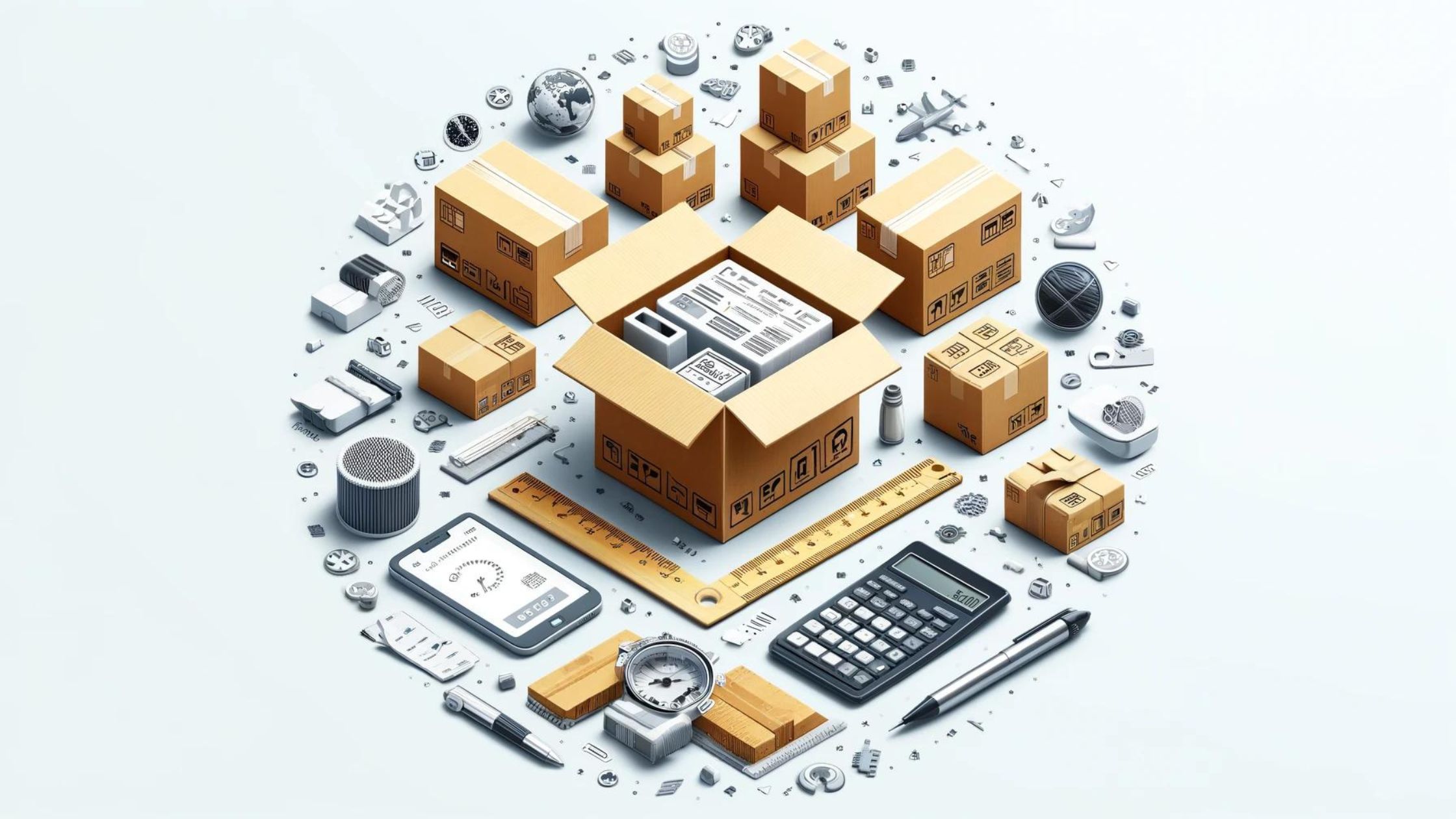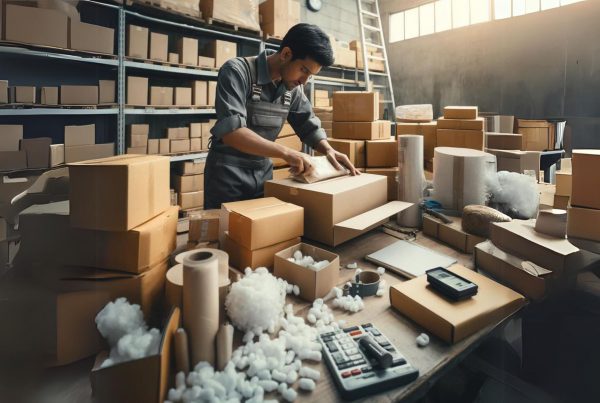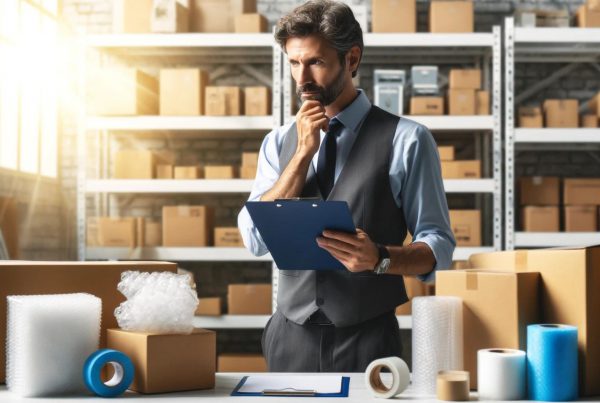Welcome to the world of logistics and supply chain management, where the seemingly simple question of packing a box becomes a fascinating puzzle. This article is your go-to guide for mastering the art of packing boxes, an essential skill for businesses striving for efficiency and sustainability.
Understanding Box Dimensions and Sizes
Box dimensions are fundamental to getting your packaging right. Whether you’re shipping out a batch of custom-designed bakery boxes or a single valuable item in a small box, knowing your box sizes is the first step. Each box has three dimensions: length, width, and height, which determine the box’s total volume and ultimately, how much it can hold.
When choosing boxes, the dimensions are not just about fitting items inside; they are about efficiency, cost savings, and protective capability. Here’s a deeper dive into the world of box dimensions and sizes:
- Dimensional Weight Pricing: Carriers often use dimensional weight to calculate shipping costs, which consider both the weight and size of the box. Understanding how to calculate the dimensional weight (length x width x height divided by a standard divisor) can help you select the most cost-effective box size.
- Standard Sizes: There are numerous standard sizes tailored for various needs. For instance, small boxes are perfect for smaller, denser items, while larger moving boxes accommodate bulkier items. Using the right size not only prevents item movement that can lead to damage but also avoids the waste of filling materials.
- Custom Sizes: Sometimes, standard sizes don’t meet specific needs, especially for unique products. Custom-sized boxes might be necessary to ensure products fit perfectly, enhancing protection during shipping. Knowing when to choose a custom box size can be crucial for businesses shipping delicate items or seeking a branded unboxing experience.
- Comparison of Box Types: It’s beneficial to understand the differences and uses of various types of boxes, like mailer boxes and moving boxes. Here’s a quick breakdown:
- Mailer Boxes: Ideal for smaller, flat items that need sturdy protection.
- Moving Boxes: Designed for volume and ease of handling during moves.
- Selecting Based on Content: For businesses like bakeries, the choice of box can impact product freshness and presentation. Searching for bakery boxes near me can provide options that cater specifically to food items, incorporating features like breathable materials or windows.
- Eco-Friendly Options: With a growing focus on sustainability, choosing recyclable or biodegradable box materials can significantly impact the environmental footprint. Eco-friendly boxes often come in standardized sizes but can be customized based on quantity orders.
Key Considerations Before Choosing Boxes
Choosing the right box isn’t just about fitting everything inside; it’s about making smart, sustainable choices. Here are a few factors to keep in mind:
- Item Size and Weight: Ensure the box can comfortably accommodate the item without squishing it.
- Material: For instance, bakery items need breathable boxes, often found by searching for bakery boxes near me.
- Innovative Packaging Technologies: Modern solutions can offer more protection with less material.
Step-by-Step Guide to Calculating Box Capacity
- Measure Your Items: Use a ruler or measuring tape to get the exact dimensions of your items.
- Choose the Right Box Type: Decide between a mailer box, moving box, and other specialized types based on your needs. The Boxery has a vast selection.
- Calculate the Volume of the Box: Multiply length by width by height.
- Determine Packing Method: Arrange items efficiently—consider stacking, layering, or side-by-side arrangement.
Tips for Maximizing Space in Your Boxes
Effective packing is an art that requires thoughtful techniques and materials to ensure every square inch of a box is used efficiently. Here are some refined tips and strategies to help you maximize space and safeguard your items during transit:
Advanced Packing Techniques
- Nesting: This involves placing smaller items inside larger ones. It’s perfect for products that have hollow spaces, like bowls or cups. This method reduces the need for additional packing material and makes excellent use of available space.
- Stacking: Careful stacking can help fit more into a box without risking damage. Ensure heavier items are at the bottom and lighter ones on top. Stack items in a way that distributes weight evenly and prevents shifting.
- Tetris Packing: Much like the game, this technique involves fitting items together in the most space-efficient manner possible. Rotate and arrange items to fill gaps and create a stable configuration.
Choosing the Right Filler Material
- Environmentally Friendly Options: Opt for biodegradable packing peanuts or recycled paper instead of plastic-based materials. These options not only secure your items but also support sustainability.
- Strategic Placement: Use filler material to fill voids and also to pad the top and bottom of your boxes, providing extra cushioning for your items. Proper placement ensures that items don’t move during shipping, reducing the risk of damage.
Utilizing Divider Inserts
- Cardboard Dividers: Perfect for multiple items, dividers help keep products separate and secure, reducing movement and potential contact damage.
- Custom Foam Inserts: For high-value or fragile items, custom foam inserts can be used to fit the exact shape of the product, offering superior protection and a professional presentation.
Maximizing Box Utilization
- Box Selection: Choose the right size from a variety of box sizes to match your items. Avoid using a box that’s too large, as this often requires more filler material and increases shipping costs.
- Volume Calculation: Calculate the volume of your items and compare it with the volume of the box to estimate how much filler material is needed. This calculation helps in selecting the most appropriately sized box.
Best Practices for Box Filling
- Bottom Layer: Start with a layer of cushioning material on the bottom of the box for shock absorption.
- Fill Gaps: As you pack, fill any gaps with crumpled paper or air pillows to prevent items from shifting.
- Top Off: Before sealing, add a final layer of cushioning on top to protect items from impacts during shipping.
Mastering these packing techniques will not only help in utilizing every inch of your boxes more effectively but also enhance the safety and integrity of the shipped items. By incorporating these strategies, businesses can reduce material costs, minimize waste, and improve overall shipping efficiency, making every shipment a testament to proficient packing.
Where to Buy Boxes and How to Make Cost-Effective Decisions
Wondering where to buy boxes? Whether you need robust moving boxes or specialized bakery boxes, finding a reliable supplier like The Boxery is key. They offer a wide range of options at competitive prices, including detailed info on the medium flat rate box price.
The Role of Sustainability in Box Selection
Selecting the right boxes isn’t just a logistical decision; it’s an environmental one. By choosing the right size and material, you reduce waste and support sustainable practices.
Wrapping It Up
Figuring out how many items fit in a shipping box isn’t just about filling up space—it’s about making smart choices that save you money and help the planet too. Keep in mind, that picking the right box isn’t just good for your wallet; it’s great for reducing your impact on the environment.
Meet The Boxery
Need a trustworthy spot to get all your packing supplies? Check out The Boxery! They’re like the Swiss Army knife of packaging—offering everything from compact mailer boxes to big moving boxes. They know their stuff when it comes to packing solutions, helping you get your logistics dialed in and adding a green touch to your operations. They’re all about making your packing smoother and more cost-effective.
This guide is here to make packing a breeze for you. It ensures every item fits snugly in its box, cutting down on costs and waste. Get it right, and packing boxes can be more than just a chore—it can be your chance to bring some extra cleverness and efficiency to your business’s shipping game.





Recent Comments